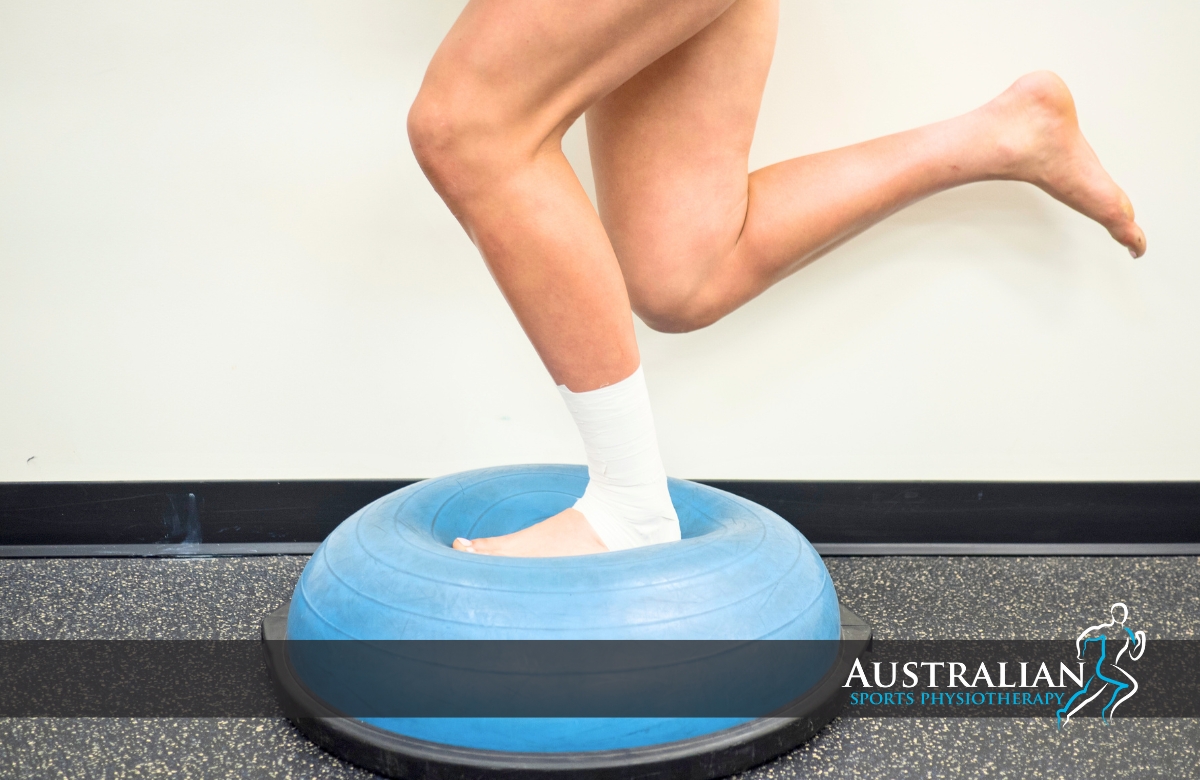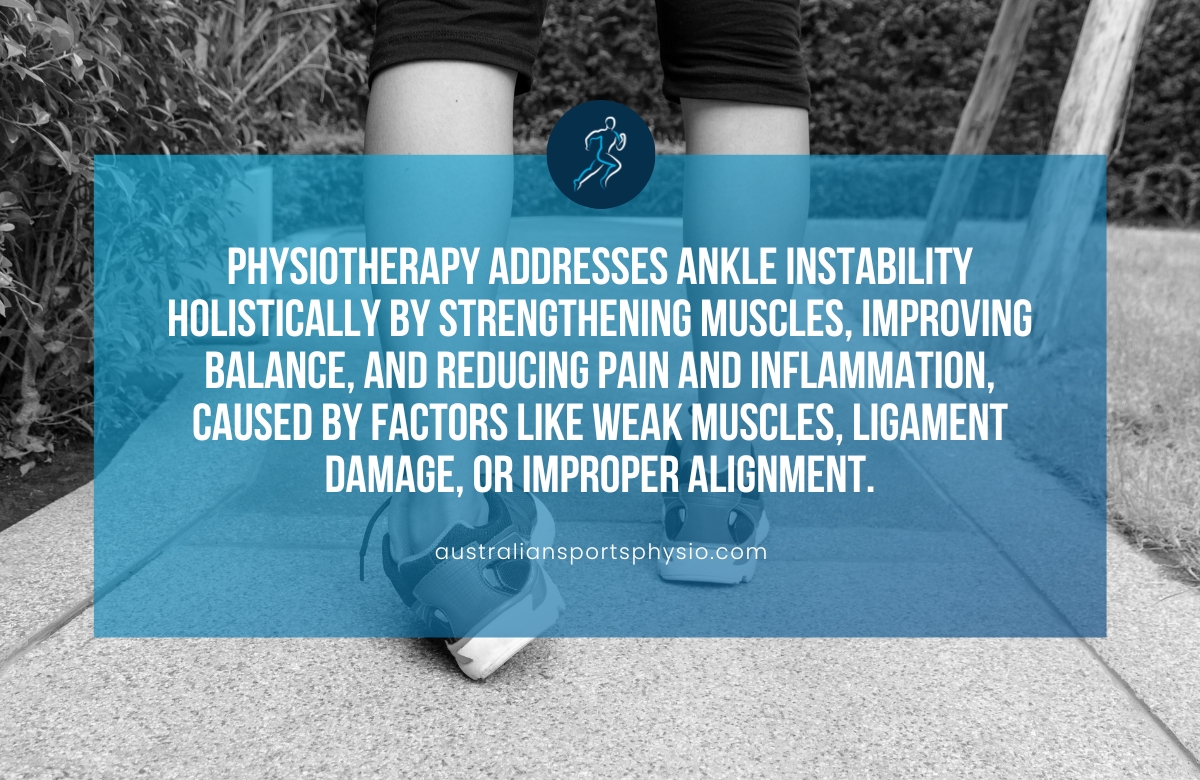Ankle instability can be a frustrating and limiting condition, affecting your ability to move and engage in physical activities. Whether you have experienced multiple ankle sprains or have a genetic predisposition to instability, finding ways to strengthen and stabilise your ankle is crucial. Physiotherapy can be a valuable tool for addressing ankle instability and improving your overall quality of life.
Ankle instability can be caused by various factors, including weak muscles, ligament damage, or improper alignment. Physiotherapy offers a holistic approach to addressing these issues, focusing on strengthening the muscles surrounding the ankle, improving balance and coordination, and reducing pain and inflammation.
If you are dealing with ankle instability, physiotherapy can be a game-changer in your recovery journey. By working with a qualified physiotherapist, you can learn exercises and techniques to improve the strength and stability of your ankle, allowing you to move with confidence and reduce your risk of future injuries.
What is ankle instability?
Ankle instability is characterised by the “giving way” of the outside (lateral) side of the ankle. This syndrome frequently develops after multiple ankle sprains. “Giving way” is most commonly done while walking or doing other tasks, but it can also happen when standing still.
Common symptoms of ankle instability
Ankle instability can cause a variety of symptoms, including:
- Pain or tenderness
A common symptom, especially after an injury or episode of “giving way.”
- Swelling
Chronic swelling and tenderness around the ankle joint are common due to inflammation from repeated injuries.
- “Giving way”
The outer side of the ankle may feel like it’s “giving way,” especially when walking, changing direction, or on uneven surfaces.
- Instability
The ankle may feel wobbly or unstable, especially when walking, running, or on uneven surfaces.
- Ankle sprains
The ankle may twist and sprain easily, especially on uneven ground or when changing direction quickly.
- Weight bearing
The ankle may buckle outwards or you may lose balance when trying to bear your weight.
Common causes of ankle instability
The most common cause of ankle instability is recurrent ankle sprains. When you sprain your ankle, the ligaments that support the joint are stretched or torn. If these ligaments don’t heal properly, they can become loose and less able to stabilise the joint. This can lead to chronic ankle instability.
Other causes of ankle instability include:
- Muscle weakness in the muscles around the ankle
- Ligament laxity (looseness)
- Nervous system problems that affect balance
Ankle instability can be a very frustrating condition, as it can make it difficult to participate in activities that you enjoy. If you think you may have ankle instability, it’s important to see a physiotherapist to get a diagnosis and discuss treatment options.
Physiotherapy treatment for ankle instability
Physiotherapy is a key part of rehabilitating ankle instability and can help improve strength, balance, and control. A physiotherapist will tailor a program to suit a patient’s needs and goals. Treatments may include:
- Strengthening exercises
- Balance training
- Stabilisation exercises
- Hydrotherapy
- Proprioception exercises
- Orthotics
- Exercises to help return to sports or hobbies
Physiotherapy for chronic ankle instability in athletes often includes active rehabilitation, balance training, and strengthening exercises.
- Active rehabilitation
Includes soft tissue massage, range of motion exercises, peroneal muscle strengthening, and proprioceptive retraining.
- Balance training
Includes single leg standing and standing on an ankle disc or wobble board.
- Strengthening exercises
Includes dorsiflexion and plantar flexion strength, weight bearing calf raises, squats, inversion and eversion strengthening, resistance bands, and ankle weights.
How long does it take to fix ankle instability?
Ankle instability can take anywhere from 6-12 weeks to heal, depending on the severity of the sprain and whether you undergo physiotherapy. In some cases, surgery may be required. Here’s a breakdown of the recovery timeline:
- Weeks 1-6: Focus on RICE (rest, ice, compression, and elevation) to reduce inflammation and pain. You may also need to wear a brace or splint to immobilise your ankle.
- Weeks 6-12: Begin physiotherapy to strengthen the muscles around your ankle and improve your balance.
If your ankle instability persists after conservative treatment, your physiotherapist may recommend surgery to repair or reconstruct the ligaments. Recovery from surgery can take several months.

Final thoughts on physio for ankle instability
Ankle instability can be a challenging condition to deal with, but with the right treatment and care, many people, including athletes, are able to improve their symptoms and get back to their normal activities.
Physiotherapy plays a crucial role in rehabilitating ankle instability by targeting muscle weakness, balance issues, and joint stability.
It is crucial to work closely with a physiotherapist to create a customised treatment plan that meets your individual needs and goals.








